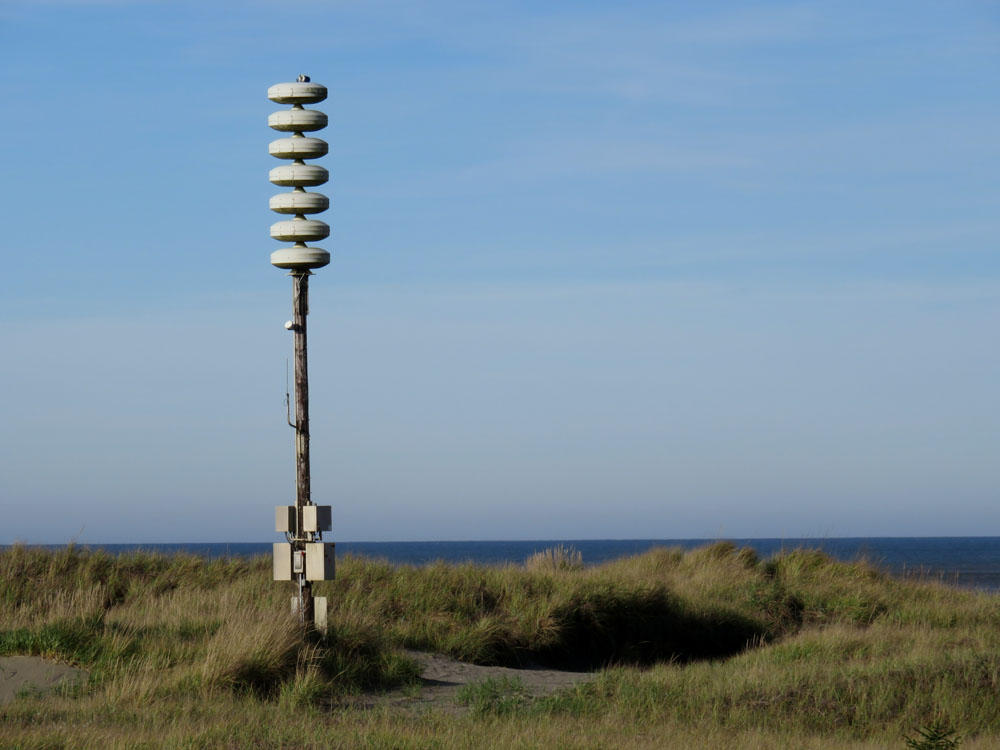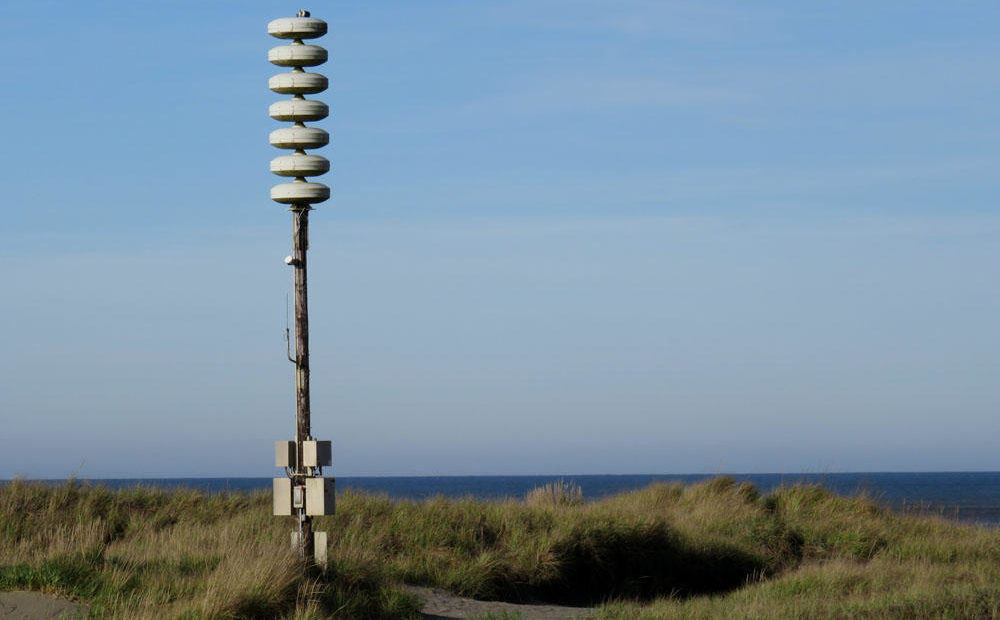
With No High Ground, Ocean Shores Considers How To Escape A Tsunami
Listen
Ocean Shores, Washington, has no natural high ground inside its city limits. On Tuesday night, residents will meet with government and university experts to discuss whether to build a tsunami evacuation platform as in a few other Northwest coastal towns.
This spring, Oregon State University broke ground on a new marine studies building in Newport, which will have a wide ramp to a safe haven on the roof. And the new gym at Ocosta Elementary School in Westport, Washington, has a reinforced roof that can double as a tsunami refuge for 1,000 people, the first of its kind in North America.
In Ocean Shores, Mayor Pro Tem Jon Martin said he used to be fatalistic about the tsunami threat, but now he believes fleeing upward like that could be a good answer.
“We need to get a plan together,” Martin said. “There definitely is survivability if we plan for it.”
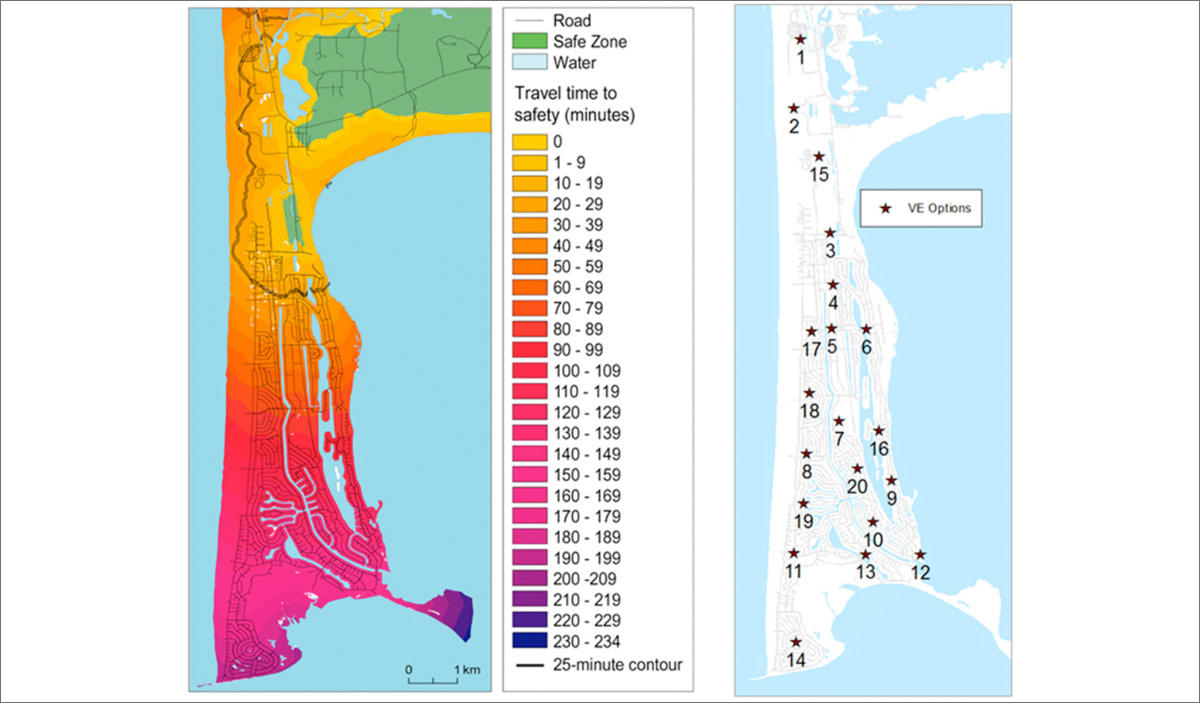
At left, estimated pedestrian travel times to escape to high ground after a big earthquake. Right, possible locations in Ocean Shores for tsunami vertical evacuation structures proposed at a community meeting. CREDIT: USGS
Martin said the city council has no pre-cooked idea for what sort of vertical evacuation structure to build or where in Ocean Shores to build it.
Washington State Emergency Management Division Earthquake Program Manager Maximilian Dixon will moderate Tuesday’s public forum about tsunami evacuation.
“This is exciting not just for Ocean Shores, but for the entire state,” Dixon said in an agency blog post. “The more vertical evacuation structures we can build in the most vulnerable locations along our coast, the more lives we will save when a tsunami eventually hits. This is just a start, though. We need many more discussions and many more of these structures built up and down the coast.”
Martin said his small city, population 5,831, would look first to the federal government for financial help if the community demonstrates enthusiasm to build a vertical evacuation structure. He hoped the State of Washington would kick in support as well. The city would probably have to contribute matching funds.
Martin said at the very least, the city council should set aside money in its next budget to update the city’s tsunami evacuation plan and look at “all options” to help more residents and tourists escape. He said ultimately the best solution could be a tall parking garage, which would solve multiple needs.
“But the estimates we’ve gotten for that are just way out of what the city could afford,” Martin said.
A man-made earthen hill or berm with room for hundreds of people to assemble on a flat top could be a more realistic near-term option. A sturdy lookout tower has also been suggested. Another possibility would be to modify the top floor of the existing North Beach Jr/Senior High School at the edge of town so that people could safely escape up onto the roof.
Updated tsunami inundation maps published in March show all of Ocean Shores, most of the Long Beach Peninsula and downtown Aberdeen and Hoquiam could be more than six feet under water after a major offshore Cascadia subduction zone earthquake.
Six years ago, a University of Washington-led study called Project Safe Haven estimated that Ocean Shores could need around 19 towers, berms or other reinforced evacuation structures to be accessible by foot to the entire peak-season population of the long, flat and narrow peninsula.
Related Stories:
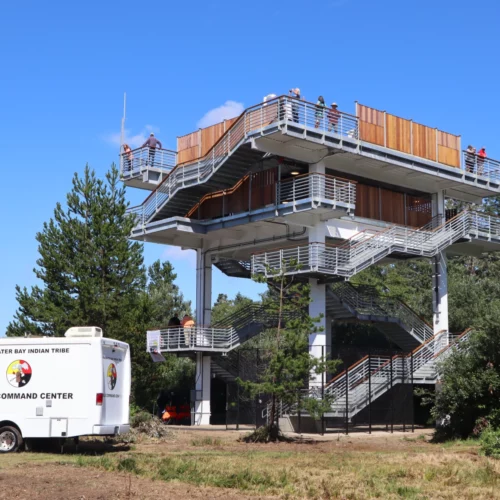
Coastal Washington Tribe Creates Higher Ground By Building Tsunami Tower, First Of Its Type Here
There is a new option to escape a tsunami if you’re on the southwest coast of Washington when the Big One strikes. The Shoalwater Bay Indian Tribe on Friday dedicated a 50-foot tall evacuation tower in Tokeland, Washington. Tribal leaders and the Federal Emergency Management Agency said the new tsunami refuge platform should be an example and inspiration for other vulnerable coastal communities.
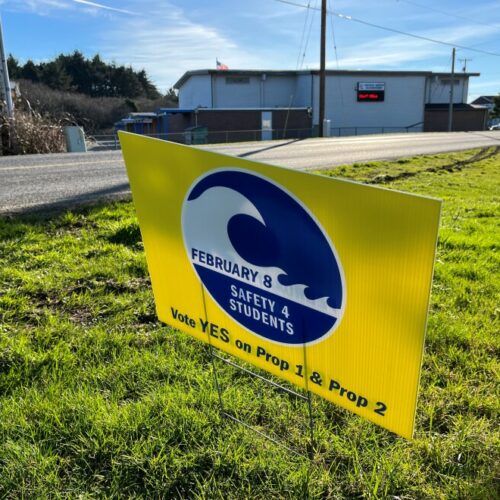
Earthquake Safety Of Schools On Ballot On Washington Coast Feb. 8, Possibly Statewide In November
The January 15 volcanic eruption near Tonga was a stark reminder of the threats posed by tsunamis. That’s long been a concern in the Pacific Northwest, where thousands of students go to school within reach of a large tsunami.
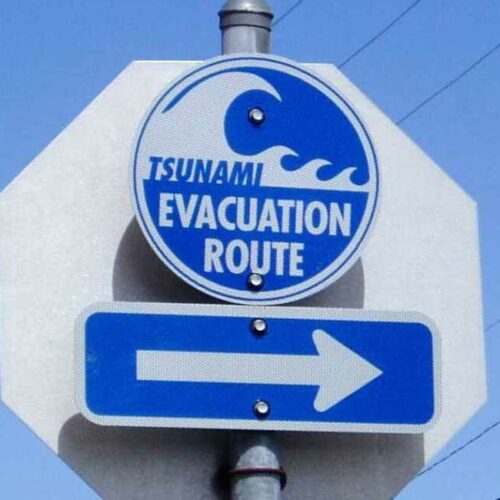
Washington State And Oregon Considering More Tsunami Refuge Facilities Along Pacific Coast Following New Study
If you are on the Pacific Northwest Coast when the next Cascadia megaquake strikes — also known as “The Big One”— the standard advice is to run for higher ground as soon as the shaking stops. But in some low-lying places such as Ocean Shores and Long Beach, Washington, and Warrenton and Seaside, Oregon, the closest high ground could be a long walk away over buckled roads.

